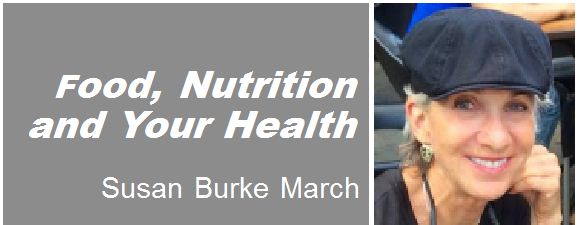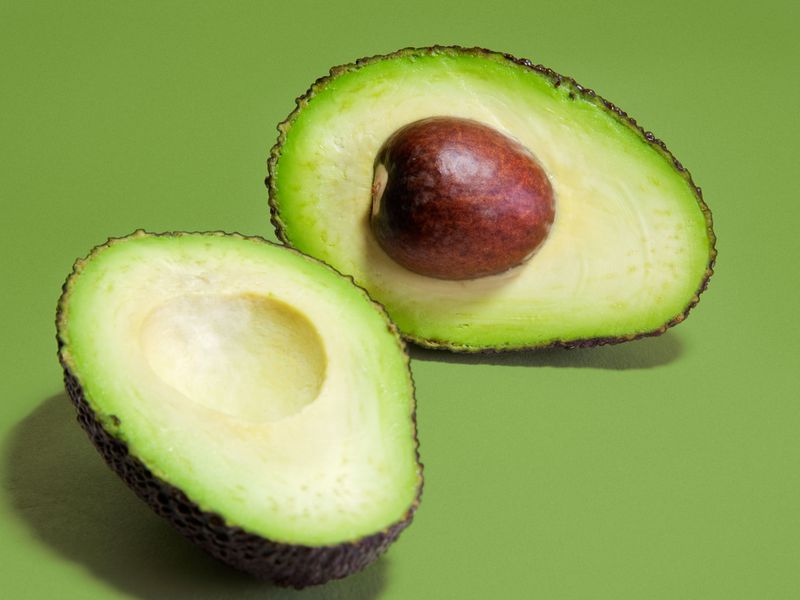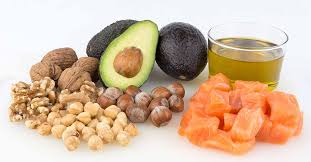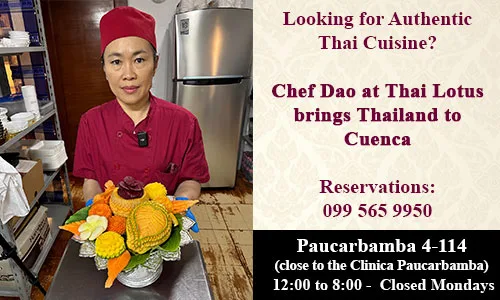My favorite food of 2019 was… avocado! What’s yours?
I’m not going to write about what were the top food trends in 2019 since they’re mostly irrelevant to me. [All the “top” lists include imitation meat, like the Impossible Burger. Why would I want to eat imitation anything? There’s plenty of real food around, why would I buy ‘fake food’ especially food that’s ‘reverse engineered’ contains unpronounceable chemicals, sodium, fillers, and gastro-upsetting xanthan gum? But I digress…]
I’m going to write about avocados. Ecuador avocados. Some foods are ‘genius’ foods, and avocados are the Einsteins of the plant kingdom.
Which came first, my move to Ecuador or my love for avocados? I feel for those living in North America or in the U.K. — where, unless you have a pretty hefty food budget, it costs tan mucho dinero for a single Haas avocado.
According to Smithsonian Magazine reports there is a “global obsession” with guacamole and avocado toast, resulting in record-high prices and avocado-related crime.
North Americans consume more than seven pounds of avocado per person each year, compared to a single pound in 1989. Per capita consumption of avocados has tripled since the early 2000s, according to the USDA. And nearly all of these avocados — some 95 percent in the U.S. and about 80 percent worldwide — are of a single variety: the ubiquitous Hass.

If you’ve eaten an avocado lately, chances are it was a Hass. (Errol Rait / Alamy )
Time.com reports that Square, a credit card processing tech company, calculates that Americans spend close to $900,000 per month on avocado toast! The Travel Channel reports that in New York City an order of avocado toast will set you back $10 — $18 if you splurge on the pomegranate avocado toast. In Miami, Mexican avocado toast with “jalapeno crema, cotija, charred corn, and pickled Fresnos” costs $15.
NewStatesman.com reports that London chef Joseph Ryan is bucking the trend — the owner of the popular vegetarian and vegan restaurant Wildflower, Ryan is not a fan of avocado — but not because he doesn’t love the succulent, satisfying flavor and smooth creamy texture of a ripe avocado — and not because he’s not impressed by nutrient-dense fruit (yes, avocados are fruits, or more accurately, a large berry containing a single large seed).
Ryan knows that the avocado is the only fruit that contains monounsaturated fat (heart-healthy), are naturally sodium-, sugar- and cholesterol-free. He’s aware that they’re full of vitamins, minerals, and fiber too – great for nourishing your healthy gut microbiome.
 But Chef Ryan has taken avocado off his menu because he’s voting with his pocketbook. Wholesale costs are astronomical — prices soared up 50 percent in the last year. And then there are the costs to the environment — he’s against shipping in ingredients from 5,000 miles away; he’s against environmental costs — avocados are water hogs. And he cites the gangland violence that has “infiltrated production of avocados in Mexico” — in all, he’s focused on sustainable ingredients, ingredients that are locally sourced or at least sourced in a neighboring continent.
But Chef Ryan has taken avocado off his menu because he’s voting with his pocketbook. Wholesale costs are astronomical — prices soared up 50 percent in the last year. And then there are the costs to the environment — he’s against shipping in ingredients from 5,000 miles away; he’s against environmental costs — avocados are water hogs. And he cites the gangland violence that has “infiltrated production of avocados in Mexico” — in all, he’s focused on sustainable ingredients, ingredients that are locally sourced or at least sourced in a neighboring continent.
If you’re shopping in North America, be prepared for sticker shock. As reported in USA Today, the average national price of a single Haas avocado (July 5, 2019) was $2.10, compared to $1.17 from the previous year. Although California and to a small extent, Florida supply some avocados for the U.S. market, most of the U.S. avocados come from Mexico — and combined with high demand, border issues and Mexican cartels, the prices are sky-high.
But here in Ecuador, we are in avocado heaven. My mercado sells fairly large ones — three or four to a dollar. My favorite vendor always asks me, “¿hoy o mañana?” Do you want one ready to eat today, or one that needs a day (or two) to ripen? It’s nice to have a choice.
 Avocados are one of the most healthful foods on earth, but should you eat them daily?
Avocados are one of the most healthful foods on earth, but should you eat them daily?
If you’re watching your weight, are you watching your calories? The ‘low fat’ weight loss advice was based on nutrient calorie counts: fat has nine calories per gram, compared to protein and carbohydrate’s four calories per gram, so it seemed logical that reducing fat calories would be essential for weight loss.
But, in light of scientific studies, nutrition advice has changed.
Stay with me here — some interesting information follows.
The Journal of the American Heart Association published a study (2015) confirming that the fat from avocados can lead to significant improvement in blood lipids and weight.
In the study, overweight and obese subjects first consumed the SAD diet (Standard American Diet) with 34 percent of their daily calories coming from fat, 51 percent from carbohydrate, and 16 percent from protein. Then after two weeks, they ate either a low fat or a moderate-fat diet without avocado or a moderate fat diet with one additional avocado daily (they ate Hass avocados). After the five weeks, the group that ate the avocado showed significant improvement in total cholesterol, triglycerides, LDL and non-HDL cholesterol.
 Besides the heart-healthy mono- unsaturated fat, the researchers note that avocados contain both soluble and insoluble fiber, and heart-healthy phytosterols, polyphenols and other beneficial phytochemicals.
Besides the heart-healthy mono- unsaturated fat, the researchers note that avocados contain both soluble and insoluble fiber, and heart-healthy phytosterols, polyphenols and other beneficial phytochemicals.
In another study published in the Nutrition Journal, participants who ate half a fresh avocado with lunch daily reported a 40 percent decrease in desire to eat for hours afterwards. Avocados have been shown to improve insulin sensitivity and glycemic control, and are associated with better diet quality and nutrient intake.
Avocados contain 20 different vitamins and minerals and have a rich and buttery taste and texture, which can satisfy your cravings. They contain more protein than any other fruit, are low in carbohydrates, and contain the healthiest fats.
The answer is “yes.” You can definitely eat avocado daily.
How? Love & Lemons suggests 54 different ways to eat avocados for breakfast, lunch, dinner, and more. In smoothies, sandwiches, smashed on toast, in tacos with tomatillos, guacamole and a variety of salads and bowls for every occasion. Try this recipe for chocolate avocado mousse!
Top 10 Facts about Avocados
- Avocado refers both to the tree and to the fruit. Botanically, the fruit is a large berry containing a single (large) seed.
- This ancient fruit dates back over 10,000 years to central Mexico, and the word “avocado” is believed to be derived from the Nahuatlword for “testicle” describing the shape of the fruit. Archaeologists believe cultivation started about 5,000 years ago. The first Europeans to eat avocados were, of course, Spanish conquistadores and settlers, who brought avocados back to Europe in the 16th century.
- Today, avocados are cultivated around the world, wherever the climate allows. Mexico is by far the largest producer, and other significant production also comes from Peru, the Dominican Republic, Colombia, and Indonesia. The trees need subtropical or tropical climates, although some varieties have been developed that are cold tolerant. Ecuador (in 2017) exported 332 tons of avocados to various destinations, a 41 percent increase over 2016.
- There are hundreds of varieties of avocado, but the most commonly cultivated avocado in the world, producing fruit year-round and accounting for 80% of the cultivated crop is the Hass (spherical), the bumpy-skinned fruit. Another popular avocado is the large green Fuerte (pear-shaped). North Americans will recognize Hass avocados as “California” avocados; Fuerte are “Florida” avocados, much larger than the Hass. Ecuador grows about 30 different varieties such as the Capac, Chota, Imbabura, Inca, and Tamayo. Click here for a fun article about shopping around Ecuador’s mercados, and pictures and descriptions of different fruits.
- Just like olives, avocados are rich in monounsaturated fatty acids, especially heart-healthy oleic acid. They’re also high in omega-3 fatty acids in the form of alpha-linolenic acid. Avocado oil is great for eating and for cooking too, since it has a high smoke point. Look for cold-pressed extra-virgin avocado oil.

Healthy fats include avocado, nuts, seeds, fatty fish, and olive oil.
- One-half of a Hass avocado contains about five grams of fiber; a half of a Fuerte about eight to nine grams. Hass contain more soluble fiber; Fuerte contain more insoluble fiber. Both types of fiber contribute to good digestion and elimination and help stabilize blood glucose and lower blood fats.
- Avocados are rich in vitamins and minerals, especially vitamin K (26 percent of the Recommended Daily Value (RDA), vitamin C (17 percent), and potassium (14 percent), even more than a banana. Another important nutrient linked to avocado heart health is beta-sitosterol, a natural plant sterol linked to healthy cholesterol levels. They also contain magnesium, phosphorus and iron.
- Oxidation (exposure to air) makes avocados turn brown, but by brushing the fruit with an acidic agent like citrus juice you can delay the process. If I want to use just half of the avocado, instead of slicing lengthwise, I cut it in half crosswise, leaving in the seed, sprinkle with juice, and then press plastic wrap right on the cut flesh and store in the refrigerator. What are your tips for keeping avocados fresh? Post your comments below.
- A ripe avocado will be firm but not hard. Overripe will feel soft like a tomato. You might want to buy firm avocados, and let them ripen at room temperature, and as they soften, refrigerate to slow the ripening process.
- Don’t throw your seeds away! You can easily get that seed to sprout, and with care, in only five to 13 years you’ll have a tree that will bear fruit!
Eat More Avocados! 
On a daily basis, avocados are a wonderful substitute for animal fats in your diet. Instead of butter, mashed avocado is perfect in your baked potatoes. Substitute mashed avocado for mayonnaise in your tuna salad — mayo, after all, is so last year!
Avocado is creamy and mild tasting, contains no artificial stabilizers or sugar, has zero sodium, no cholesterol, and is low in fat and calories compared to mayonnaise. Here’s a great recipe adapted from California Avocado Direct for an egg-free, soy and dairy-free substitute.
Better than Mayo: Avocado Dressing
Ingredients:
1 ripe large avocado, sliced or chunked
1-2 teaspoons of lemon juice (more likely to find small limes in the mercados of Cuenca)
1 teaspoon prepared Dijon mustard (optional)
1 pinch cayenne pepper (optional)
¼ teaspoon sea salt (to taste)
¼ cup extra virgin olive oil
Instructions:
Wash the avocado, cut in half, scoop out the flesh, and put in blender. Add all of the ingredients except the olive oil, and blend together. With the blender running on low, add the olive oil slowly until the mixture is light and creamy.
Feel free to post your favorite avocado recipes/tips in the comments below.

Score points with avocados!
Sources:
AvoSeedo.com. A brief history of the avocado.
CaliforniaAvocado.com. Avocado nutritional information.
CaliforniaAvocadosDirect.com. Use Avocado as a Healthy Butter Substitute.
Journal of the American Heart Association. Effect of a Moderate Fat Diet With and Without Avocados on Lipoprotein Particle Number, Size and Subclasses in Overweight and Obese Adults: A Randomized, Controlled Trial.
LoveOneToday.com.We love fresh avocado.
NewStatesman.com. Why avocado toast is so problematic.
Nutrition Journal. A randomized 3×3 crossover study to evaluate the effect of Hass avocado intake on post-ingestive satiety, glucose and insulin levels, and subsequent energy intake in overweight adults.
Nutrition Journal. Avocado consumption is associated with better diet quality and nutrient intake, and lower metabolic syndrome risk in US adults: results from the National Health and Nutrition Examination Survey (NHANES) 2001-2008.
SmithsonianMag.com. What makes these avocados different from all others? TheGuardian.com. Chilean villagers claim British appetite for avocados is draining region dry.
Time.com. Americans are spending at least $900,000 per month on avocado toast, according to Square.
TravelChannel.com. This is what avocado toast will cost you across the country.
Wikipedia.com. Avocado.
Wikipedia.com. Hass avocado.
___________________________________
Food, Nutrition, and Your Health columnist Susan Burke March moved to Cuenca after working for more than 25 years as a Registered and Licensed Dietitian and Certified Diabetes Educator in the United States. She currently serves as the Country Representative from Ecuador for the Academy of Nutrition and Dietetics.


















